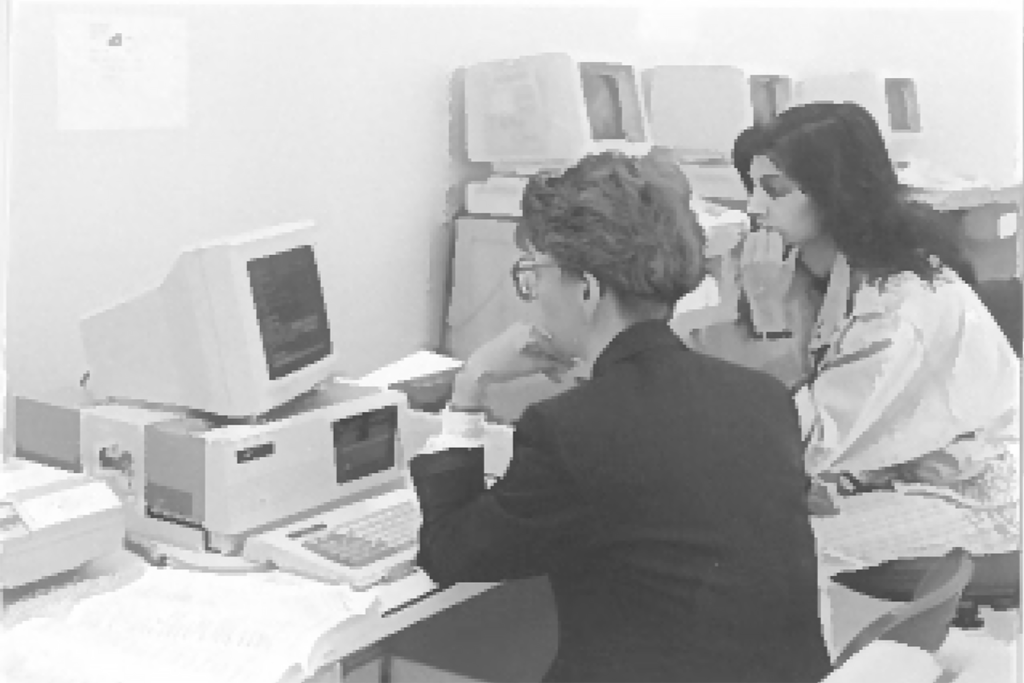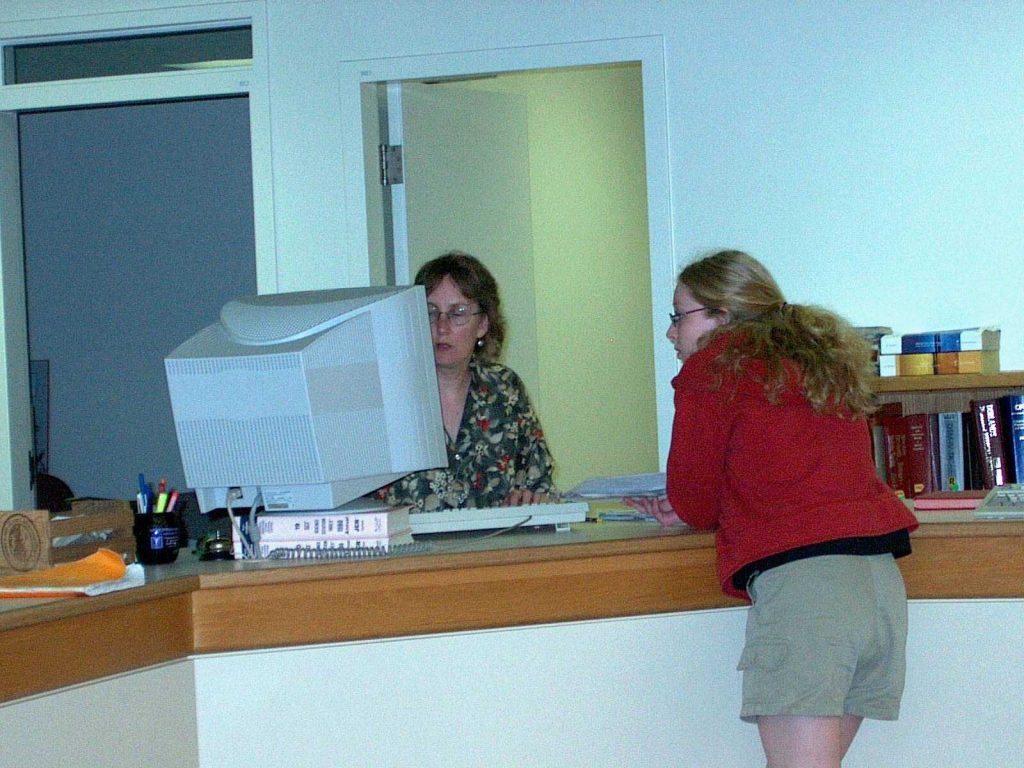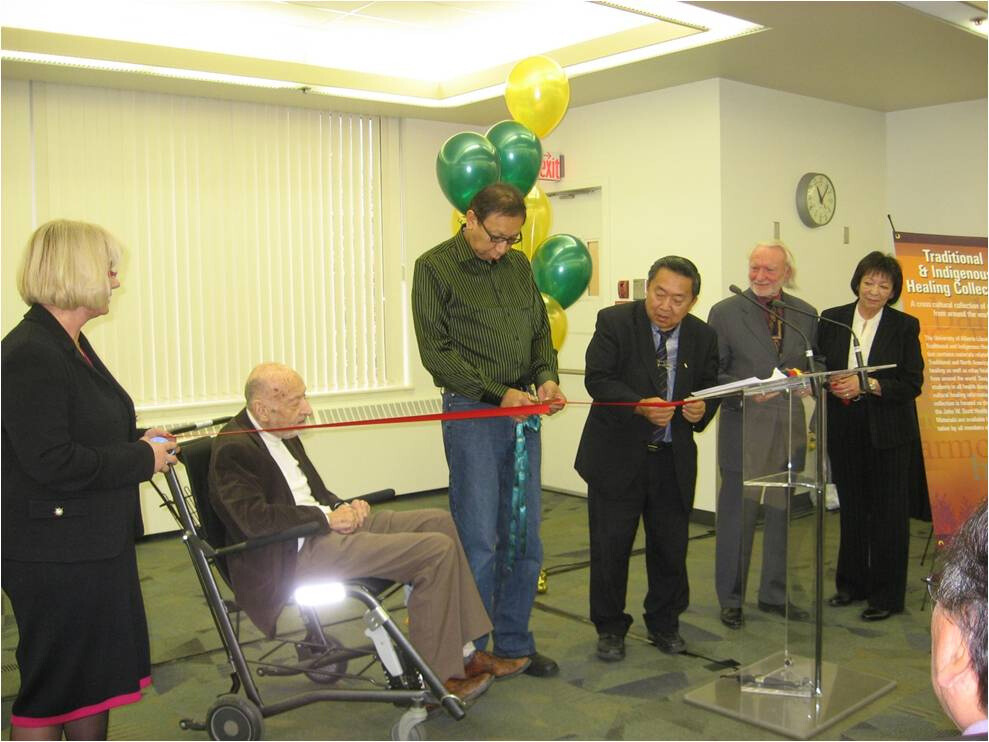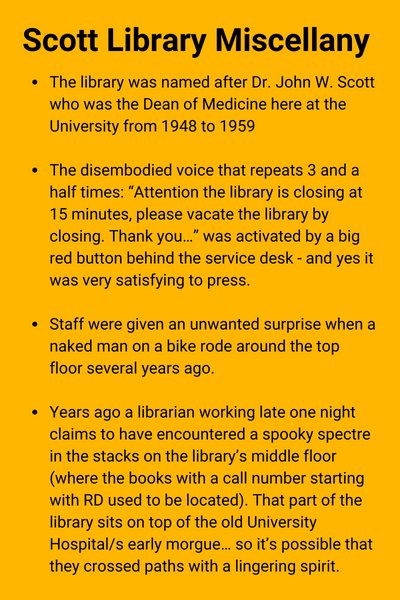Welcome back. The last post explored the first decade and a half of the Scott Library. We pick-up at the dawn of the World Wide Web, which would forever change how we access information in the library and beyond.

1995 to 2009 – The Internet transforms the information landscape
A student walking into the Scott Library in 1995 would have found computer workstations intended for word processing and other basic functions scattered throughout the space, including a couple catalogue stations that used CD-Rom records of the library’s holdings. Though the Internet became more widespread in 1995, students and library users, outside of librarians, would not have widespread access to it at the Scott until the later part of the 90s. Once in the new millennium, the library as a whole embraced the digital and soon our website with an online catalogue and databases was born. You can see an early version of the Library’s website in the Wayback Machine. It would quickly become an essential tool for research and collections access as an increasing amount of periodicals and books moved to an electronic format.

As the Internet became a more dominant influence, older analog technologies fell into disuse. The media library and photocopying services were decommissioned and the spaces were reallocated. The reference desk and a reference area were moved into the space occupied by the media library and the photocopying room became the ILL office. Gradually, the demand for print resources decreased, and some of the shelves in the basement were removed to make room for more study space.
2010 – 2023 – A move towards greater inclusivity before the end times
In October 2010 Sundance Chief Clifford Cardinal, who was an Assistant Professor of Medicine and Dentistry at the time, helped formally open the Library’s Traditional and Indigenous Healing Collection on the top floor of the Scott Library. The collection was located on the Library’s top floor and was curated with a focus on traditional healing practices from around the globe, with a special emphasis on Traditional Chinese medicine and North American Indigenous healing. Many of North American Indigenous materials will be available at the Sperber Library Indigenous Healing Collection.

As the 2010s unfolded the library adopted a single service desk model and the reference desk and service desk were consolidated in its current location. The previous location of the reference desk, was reimagined as a lounge space with take-a-book, leave-a-book shelves and comfy soft seating to provide students and other library users a place to relax. The library also added a self-checkout kiosk and towards the end of the decade, height adjustable desks, treadmill desks and a wider array of seating options to accommodate library patrons’ preferences and accessibility needs. Unoccupied offices on the middle floor were converted into individual study rooms. In 2018, a decision was made to move the most valuable and rare items from the Rawlinson collection to Bruce Peel Special Collections to ensure their longevity. The rest of the items in the Rawlinson collection were moved to the RCRF.

By the end of the 2010s it was decided that the Scott Library would move from its location in the Walter C. Mackenzie Centre, as its lease of the AHS owned space was set to end in 2024. Then the COVID-19 pandemic hit in March 2020 and the library closed its doors temporarily from March 15 2020 until mid-August 2021. Sadly, students beginning their academic careers during this time missed out on the space during this period, but in the time since many have come to discover and rediscover the Scott since reopening. We hope that they will enjoy the Sperber library as much as they did the Scott.
Love us on the blog? Then you’ll love us on social media! Check us out at @uofalibrary on Instagram, & Twitter!
This content is licenced under a CC BY-NC-SA 4.0 Creative Commons licence.
